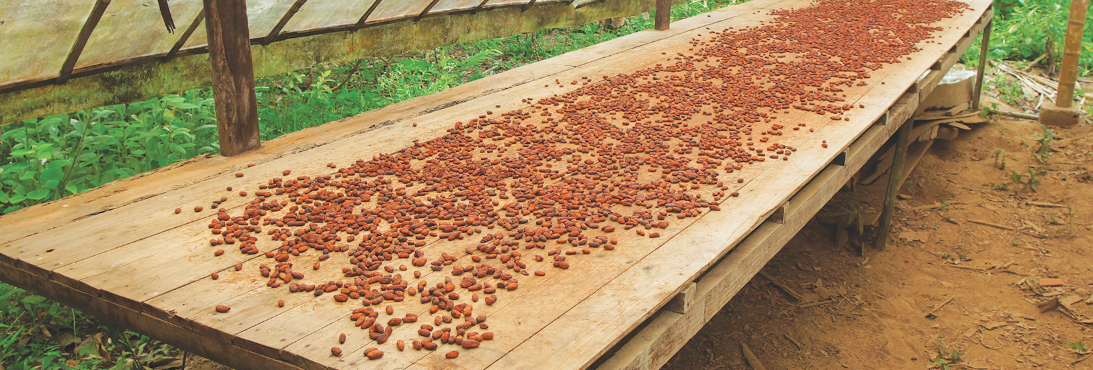KANSAS CITY — As sustainability has become a more important component of the purchasing and product development process, companies are focusing on the economic welfare of producers as well as the environmental impact of raw material production. Developing effective sustainability programs in less-developed, sometimes remote parts of the world can be challenging as managers seek to solidify and enhance their supply chains.
Mars Wrigley Confectionery, Chicago, a business unit of Mars Inc., said it is putting the interests of smallholder farmers at the center of its plan for overhauling its cocoa supply chain. The initiative is backed by the planned investment of $1 billion over 10 years, the company said.
“For nearly 40 years we’ve been working to achieve sustainable cocoa production,” said John Ament, global vice-president — cocoa, Mars Wrigley Confectionery. “While we’ve made progress, including reaching nearly 180,000 farmers with sustainability certification, we are impatient with our pace of progress and of the cocoa sector overall. We don’t have all the answers, but our first step is to put the farmer at the center of our ambitions and actions.”
Mars has set a goal to make 100% of its cocoa from the program responsibly sourced globally and traceable by 2025. The company wants to have systems in place to address deforestation, child labor and higher incomes for farmers.
The programs will be sophisticated, too. Mars said it expects farms that are part of the program to provide satellite-based GPS locations for farms that supply its cocoa to ensure the raw material is not coming from protected forest areas. The company also will work with its partners to ensure the model for premiums the company pays for responsibly-produced cocoa is overhauled to ensure that farmers receive a higher share of the premium.
 The company added that it hopes to demonstrate that a step-change in farmer income and livelihoods is possible. Management plans to test ways to increase productivity, income, resilience and overall sustainability through crop and income diversification, gender programs, village and savings and loan models and farm development plans.
The company added that it hopes to demonstrate that a step-change in farmer income and livelihoods is possible. Management plans to test ways to increase productivity, income, resilience and overall sustainability through crop and income diversification, gender programs, village and savings and loan models and farm development plans.
Herb and spice supplier Kalustyan Corp., Union, N.J., is another company that has spent years working with farmers in such countries as Albania, Egypt, India and Turkey to establish a consistent, sustainable supply of raw materials.
“Our customers are looking for the right practices to ensure the environment is taken care of and that includes the economic environment,” said Bryan Quackenbush, marketing manager. “We are looking at (farming) techniques to ensure there is minimal impact to the supply they (the customers) are looking for and to meet their demands. It’s a delicate balancing act.”
Abdul Gaba, Q.S. global and sustainable supply chain director for Kalustyan, said the company’s efforts rests on four pillars: Education, good agriculture practices, resource conservation, and safety and wellbeing. He defined education as sharing scientific information and experience with farmers as well as making a commitment to buy the crop.
“We work with them on short- and long-term approaches,” he said. “We want to give the farmer what they deserve, a better living and future in the farming business as long as they do what they are supposed to.”
But Mr. Gaba emphasized that change is not easy.
“Even what you consider small changes can be difficult, because in some situations there are forces working against you,” he said. “You have to remember that when you choose farmers to work with and help, they are in a community that might isolate them. These issues can be very big. We are working in small communities that might not welcome outsiders, people telling them what to do.
“You can’t compete with knowledge that has been passed from generation to generation. You have to learn how to pack and present the program in the right way; you have to validate even the minor changes.
“The challenge is changing their mentality. Luckily, we do see change and we do see consistency, but it’s a relationship of trust. We have to deliver and so do they.”
For his people who are working with farmers and establishing farmer-level sustainability programs, Mr. Gaba recommends they put themselves in the farmer’s shoes.
“Many of these farmers live below the poverty level,” he said. “We see some who are disappointed with the business and considering giving up. What we will give them is fair market prices. For us to survive, they need to survive.”
Good agricultural practices introduced may come from sources such as the Sustainable Agriculture Network or the Food and Agriculture Organization of the United Nations. Resource conservation efforts may range from the implementation of solar power generation vs. using fuel to fertilizer selection and usage.
Getting a program established and running can take anywhere from 12 to 24 months, Mr. Gaba said. Each effort is different because he and his staff must take into consideration local regulations and develop programs that meet Kalustyan’s requirements, but also those of local authorities.
The topic of sustainability, whether it is environmental or social, rapidly has emerged as a consumer concern during the past decade. While some managers may look at the volume and cost aspects of the supply chain, Mr. Gaba said the human element also must be taken into account.
“This is a partnership between us and the farmers,” he said. “We need that partnership to extend to companies and to consumers. This isn’t a one man show or a one company show. We all need to share the same vision.”




